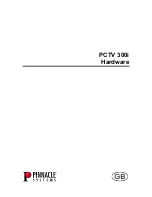
36
For any help concerning set up and use of your TV please call the
Customer Helpline: 0845 604 0105
De
fi
nitions of Important Terms
Aspect Ratio
This refers to the ratio of the width to the height of
a picture.
AVL
Automatic volume limiter.
Brightness
This defines the overall light level of the entire
image.
Contrast
This will adjust the range of optical density and tone
of the complete picture.
Component Audio Inputs
Used for the standard analogue audio for
interconnection of components.
Component Video Inputs (Y/Pb/Pr)
This video signal consist of colour differences and a
luminance signal.
HDMI
High De
fi
nition Multimedia Interface. This connection
provides high-quality, uncompressed digital video and
audio, combining both audio and video signals via a
single connection.
LCN
LCN is the Logical Channel Number system that
organizes available broadcasts in accordance with a
recognizable channel sequence.
Multichannel audio
Means that the TV program is aired in several audio
versions, for example, in two different languages.
This is possible if on an analogue TV each of the two
channels of the stereo tracks for left and right channels
are occupied with one audio track in mono (single
channel). In digital TV multiple audio streams can be
broadcasted and selected on the receiver side
NTSC
United States’ standard for scanning television signals
that has been adopted by some other countries.
OSD
On Screen Display. Information, like channel number
and volume on the screen of a TV.
PAL
The European TV standard for scanning television
signals.
Scart
A 21-pin audio/video connector found primarily on
European televisions.
Sharpness
A control that creates the effect of greater resolution
by light to dark transitions.
System
De
fi
nes the broadcast type of the TV picture since
these broadcast systems are not same for all
countries.
VGA
VGA is a common standard graphics display system
for PCs.
SECAM
The video format used in France and some other
countries, similar to PAL.



































